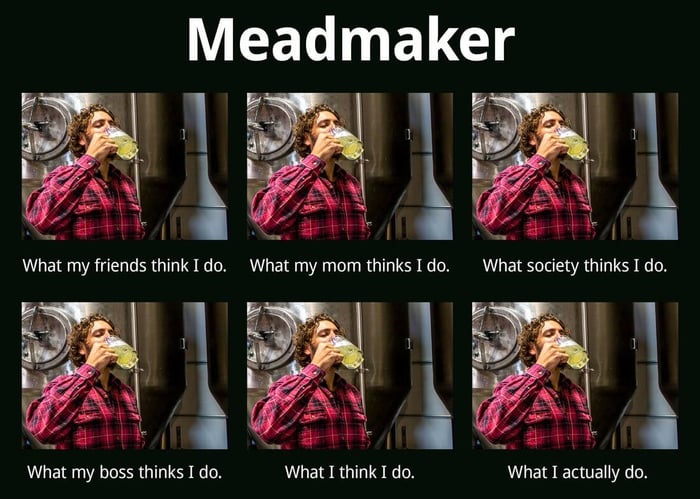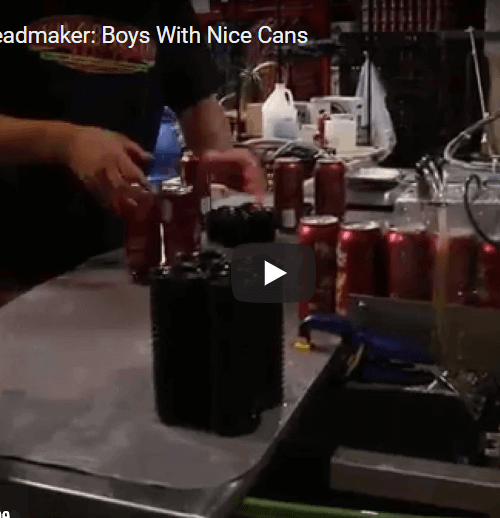We say it on our website, at brewfests, on distributor ride alongs, in our tasting room, and everywhere we are allowed to speak about our product: Groennfell Meadery makes Craft Mead.
Or, to put it another way, Groennfell Meadery does not make Honey Wine.
Or yet another way: just as all apple wines are ciders, but not all ciders are apple wines; all honey wines are meads, but not all meads are honey wines. [1]
We just realized, however, that very few people have anything more than the murkiest of concepts about what exactly qualifies as a “Craft Mead” and how it differs from what the vast majority of the meaderies in the United States produce. Even our excellent Mead Varieties Poster doesn’t really offer any answers.
So, today we are offering our definition of Craft Mead. This is not a definition of “hand crafted mead.” Nor is it a definition of “artisanal small batch mead.” It is not an attempt at describing what makes a mead good or bad. It is our definition of Craft Mead.
To us, a Craft Mead is a mead that is designed in the tradition of craft beer or craft cider and marketed alongside them. Here are our guidelines and parameters for qualifying to us as a Craft Mead. Exceptions are in the footnotes.
- Packaging: It must be packaged in “traditional beer packaging.” This can be beer bottles (12 oz., 22 oz., and some 500 ml), cans, or kegs. If you want to be put in the craft beverage section in a liquor store, it really helps to look like you belong there. [2]
- Carbonation: It must have bubbles. [3]
- Alcohol Content: Again, “beer range” is a pretty good target, so 4% – 9% abv. [4]
- Price: It must be affordable enough to appear reasonable alongside ciders and beers. Making a high quality product that can sit on a shelf for 10¢-35¢ per ounce is a real challenge, but it is an absolute must. [5]
Many meadmakers seem to find price to be their greatest limitation when it comes to brewing and selling a craft mead. Even if you hit every other metric, if the shelf price is $8 for a 500 ml bottle, that would work out to an absolutely outrageous $34 six-pack. At that price it can be a very well crafted mead, perfect for a special occasion, but it doesn’t fit our definition of a Craft Mead. [6] Furthermore, $8 for a 500 ml bottle is well below what most meaderies would consider charging!
So why does it matter? It matters because we want to help everyone succeed in the mead industry. We are not defining Craft Mead because we think it’s better or we want to exclude Honey Wines from the marketplace.
We feel that having a clear definition of Craft Mead will help other meaderies produce a product that really has a place on the shelf alongside all of the great craft beers and ciders out there.
We know that not everyone will agree with our parameters, especially the packaging, carbonation, alcohol content, and price ones, but it’s good to have a definition somewhere on the internet.
Oh, and there’s one more thing: Craft Mead can’t be brewed by a big multi-national brand disguising themselves as craft meadery. It’s not like anyone’s doing that yet, but we are not excited about the prospect of a Shock Top Mead.
[1] Or pick your analogy: ales : beer, cheddars : cheese, astromechs : droids
[2] Yes, we’re intentionally excluding 375ml and 750ml bottles, even though those are what the Feds want.
[3] Could a craft meadery get away with one still product? Possibly, but it would very much be the exception and not the rule. We’ve had a few still beers. They were an… exception and definitely not a rule.
[4] Are there 14% abv. beers? Sure. But if you have something at 14%, you’d better have a few around 5% as well. In this case, as with the bubbles, it’s partially the company it keeps.
[5] Again, exceptions can of course be made for absolute monsters or funky seasonals, but only if they’re in a family that includes some reasonably priced kin. Please see 3 and 4 above.
[6] Yes, we know. Bombers. Please read our thoughts on the Bomber Scam Here.





